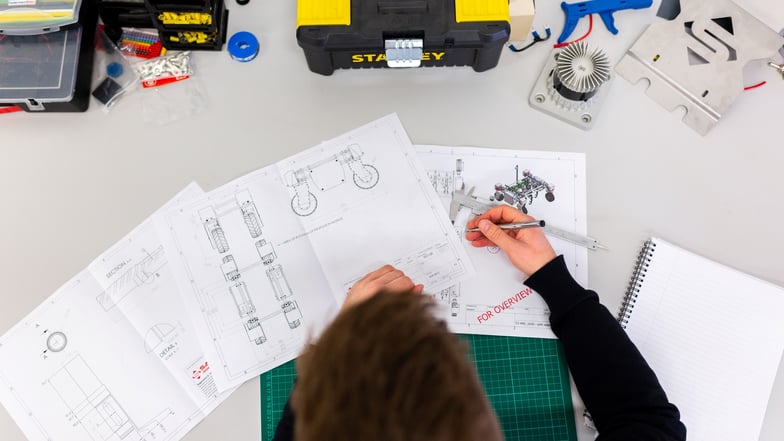Energy Efficiency | August 17, 2020
Energy Efficiency Investment ROI on Capital Spend
Any business, whether for-profit or non-profit, typically makes difficult financial decisions every year regarding the allocation of dollars for capital requests that actually exceed the capital available. New equipment and staff for growth, replacement equipment for maintenance, cosmetic upgrades, process research and development – there’s never enough money to cover everything. Management has to triage and allocate capital to requests that are considered most crucial to the business, leaving other requests deferred to next year.
Many times, energy efficiency improvements are the type of project that gets deferred – they are considered good to have but:
- The existing lighting may not be efficient, but it provides light.
- The HVAC systems may use a lot of energy, but they still heat and cool the building.
For example, if the roof is leaking, replacing the roof is a higher priority than an energy efficiency project.
The case for business to spend capital on energy efficiency
Faced with repeated, denied capital requests, facility managers often become fatigued at the prospect of tackling the efficiency of lighting and HVAC systems.
Attempting to deflect having to address the efficiency issue, a facility manager at a university once told me, “We’ve essentially upgraded all the lighting on campus over the years to LED.” However, they hadn’t. We quickly discovered a wealth of opportunities for efficiency upgrades, including most buildings still using fluorescent lighting.
After two years of working through the capital allocation decision-making structure for this school, including meetings with the V.P. of Real Estate, the CFO, the President and the Board of Directors, we are currently completing a campus-wide LED lighting upgrade that saves the university over $1 million per year in reduced electricity cost. Combined with significant utility incentives, this project has a simple payback of just two years. Turns out the university had a lot to benefit from a lighting upgrade after all.
Unfortunately, the real value of an energy efficiency investment is often not apparent to financial decision makers because of the difficult process of identifying the value. It is not uncommon to find facility managers with their hands full just trying to keep systems and equipment operating. Couple this with the fact that energy efficiency – done right – requires a level of expertise and experience that facility managers usually don’t have the time to develop.
The facility managers are usually left with going outside the business and engaging with efficient equipment providers or efficiency experts to define efficiency solutions.
How to lower operational costs with an energy efficiency investment
There are several models to choose from. We’ve defined them under four tiers. The higher the tier, the greater the benefit to standard commercial/industrial facilities.

Tier 1: Install efficient equipment
A low-cost, low-tier option is to have different vendors present their products that improve efficiency. The facility manager has to make decisions regarding the efficacy and cost effectiveness of the different products. As discussed, the facility manager typically doesn’t have the time or expertise to vet different products and will default to relying on vendor claims.
There’s typically limited ability to obtain higher, custom or comprehensive utility incentives and the facility will be responsible for interfacing with the utility and receiving any incentives after the project is complete.
Tier 2: Plans and specification bid process
A more involved process is to hire an efficiency engineering firm to perform an analysis of the equipment and systems and provide a report that lists potential energy efficiency improvements with estimated costs and savings.
This requires a capital allocation decision. Depending on the level of detail and accuracy desired, it may be a significant capital allocation.
At the end of the process, the company has a report with some conceptual ideas for efficiency improvement.
The next step is for the facility itself to make decisions regarding which measures to pursue e and hire an engineering/design firm to develop plans and specifications for the selected efficiency measures (another capital allocation decision). The facility must then obtain bids, evaluate submissions and select a contractor to install the efficiency measures (yet another capital allocation decision).
This multistep process, with multiple capital allocation decisions along the way, is cumbersome and time consuming. It is not uncommon for these project development stages to take a year or more. If the efficiency projects save $500,000 a year, in addition to the capital allocations needed to get to the point of installing the efficiency projects, the time it took to build these projects has now cost the facility that $500,000 in lost savings – it can quickly become a steep cost of waiting.

Tier 3: Performance-based contracts with a traditional Energy Service Company (ESCO)
The facility can engage and enter into a multi-year shared savings contract with a traditional Energy Services Company (ESCO), whereby the ESCO will analyze systems to develop efficiency projects, obtain utility incentives and finance the projects over the term of the contract.
The benefit to the facility from this arrangement is that there is typically no upfront expenses and the contract is set up so that based on a share of the savings, (10-20%), the facility can pay the ongoing finance cost while remaining cash positive.
There are a few, primary downsides to this type of arrangement. These include:
- A much higher finance charge will be involved than what the facility could obtain on the open market
- Compromise sovereignty over the facility’s systems and operations
- The facility usually won’t benefit from the higher custom and comprehensive utility incentives (traditional ESCOs typically don’t want to spend the required utility interface time)
- Most of the savings over a long period of time (10-20 year finance term) will accrue to the ESCO.
The facility will have to make a 10- to 20-year commitment to engage the ESCO based on incomplete information (What are the scopes of the projects? What are the installed project costs? What are the savings?) for the ease of developing efficiency projects with no upfront allocation decisions. There are some pros to this arrangement, yes, but definitely some cons as well.

Tier 4: Design/build engineered projects with utility incentives
The final, and recommended tier 4 option is where the facility engages with an experienced energy engineering firm that provides design/build efficiency solutions. This type of energy engineering includes:
- Providing analysis and identification of efficiency solutions at no cost
- Calculating a high-level economic summary for each efficiency measure at the facility, including estimations of:
- Savings
- Installed cost
- Utility incentives
- Final customer cost
The energy engineering firm should work with custom and comprehensive utility programs to maximize available incentives. They may also take the responsibility for these incentives by accepting payment directly from the utility, which would provide two benefits. This tactic reduces capital cost and also puts incentive risk on the engineering firm and off the facility itself.
If the facility decides to pursue any of the identified efficiency solutions, the energy engineering firm performs the investment-grade engineering to provide a firm price with design/build proposal to install the efficiency solutions.
The only capital allocation decision the facility has to make with this option is whether or not to contract on the basis of the firm price with design/build proposal at which time savings, installed cost and utility incentives are defined. The facility is equipped with enough information to make an informed decision.
This process usually takes 1-4 months and minimizes lost savings.
The ROI of energy efficiency projects
With the high level of utility incentives currently available in New England that have custom and comprehensive programs, it is not uncommon for utility incentives to pay for 40 to 75% of the cost of efficiency measures with project simple paybacks of 1-2 years. Utility programs differ nationwide but are always worth examining to support an energy efficiency investment.
Many projects considered “capital improvements” will update a space but not deliver a return on their cost. Good examples include painting, certain types of HVAC equipment upgrades, some renovations or building expansions, or paving over a parking lot. Efficiency projects, however, are a type of capital improvement that actually deliver a return on investment. Compared to other operational improvements, professionally engineered energy efficiency solutions will improve the bottom line by significantly decreasing utility costs.
Efficiency project paybacks of 1-2 years have a return on investment of 50% to 100%. At this level of ROI, and with the utility paying for a large part of real energy improvements to the facility, efficiency solutions can compete very favorably with all the other capital requests.
Ultimately, there are many ways to spend capital and energy efficiency all too often is assigned a low priority. If the efficiency project is developed to the point that real annual savings, installed cost, utility incentives and project ROI are defined, many times an energy efficiency investment project is identified as one of the best uses of capital.
Related Posts
Discover more content and insights from Mantis Innovation

The Cost of Inaction: Why Businesses Should Act Now on Energy Efficiency
In today's fast-paced business environment, the financial and operational losses businesses incur by delaying energy efficiency improvements, the "cost of inaction," is more relevant than ever.

In today’s AI era, human intelligence is the key to data center facility and energy optimization
Nowhere else in modern industry do artificial and human intelligence converge with such transformative potential as in the world of data centers. As AI's extraordinary growth accelerates demand for

Your Guide to LED Lighting for Business and Commercial Buildings
Never to be underestimated, LED lighting and well-designed lighting retrofits and upgrades offer businesses big improvements like reduced energy costs, reduced emissions, and improved working

Five Trends Driving Data Center Facility Energy Optimization
Today’s digital economy, commercial and industrial digitalization, and the recent explosion in artificial intelligence and machine learning (AI/ML) powered computing are driving massive growth in
